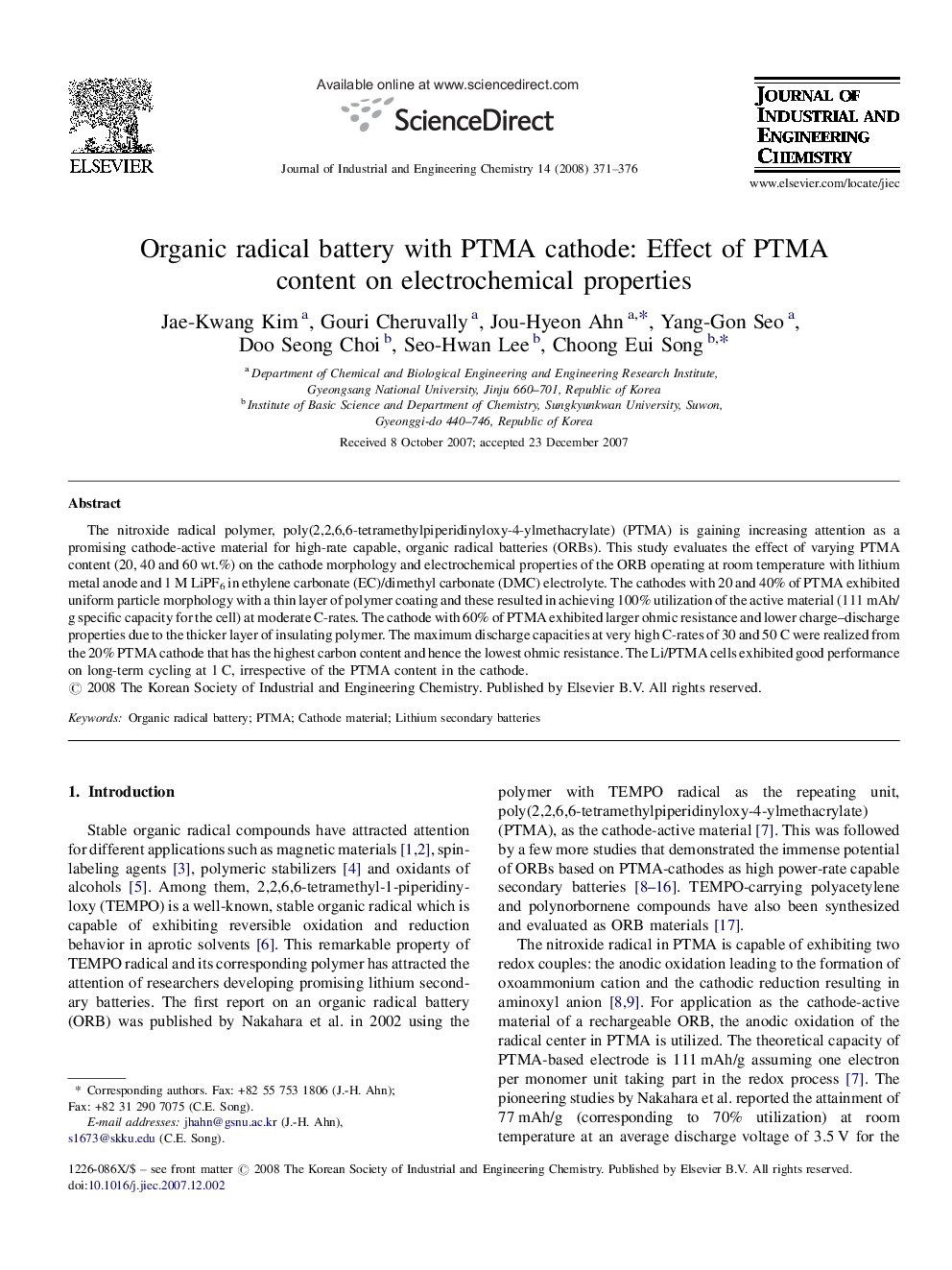| Article ID | Journal | Published Year | Pages | File Type |
|---|---|---|---|---|
| 228905 | Journal of Industrial and Engineering Chemistry | 2008 | 6 Pages |
The nitroxide radical polymer, poly(2,2,6,6-tetramethylpiperidinyloxy-4-ylmethacrylate) (PTMA) is gaining increasing attention as a promising cathode-active material for high-rate capable, organic radical batteries (ORBs). This study evaluates the effect of varying PTMA content (20, 40 and 60 wt.%) on the cathode morphology and electrochemical properties of the ORB operating at room temperature with lithium metal anode and 1 M LiPF6 in ethylene carbonate (EC)/dimethyl carbonate (DMC) electrolyte. The cathodes with 20 and 40% of PTMA exhibited uniform particle morphology with a thin layer of polymer coating and these resulted in achieving 100% utilization of the active material (111 mAh/g specific capacity for the cell) at moderate C-rates. The cathode with 60% of PTMA exhibited larger ohmic resistance and lower charge–discharge properties due to the thicker layer of insulating polymer. The maximum discharge capacities at very high C-rates of 30 and 50 C were realized from the 20% PTMA cathode that has the highest carbon content and hence the lowest ohmic resistance. The Li/PTMA cells exhibited good performance on long-term cycling at 1 C, irrespective of the PTMA content in the cathode.
